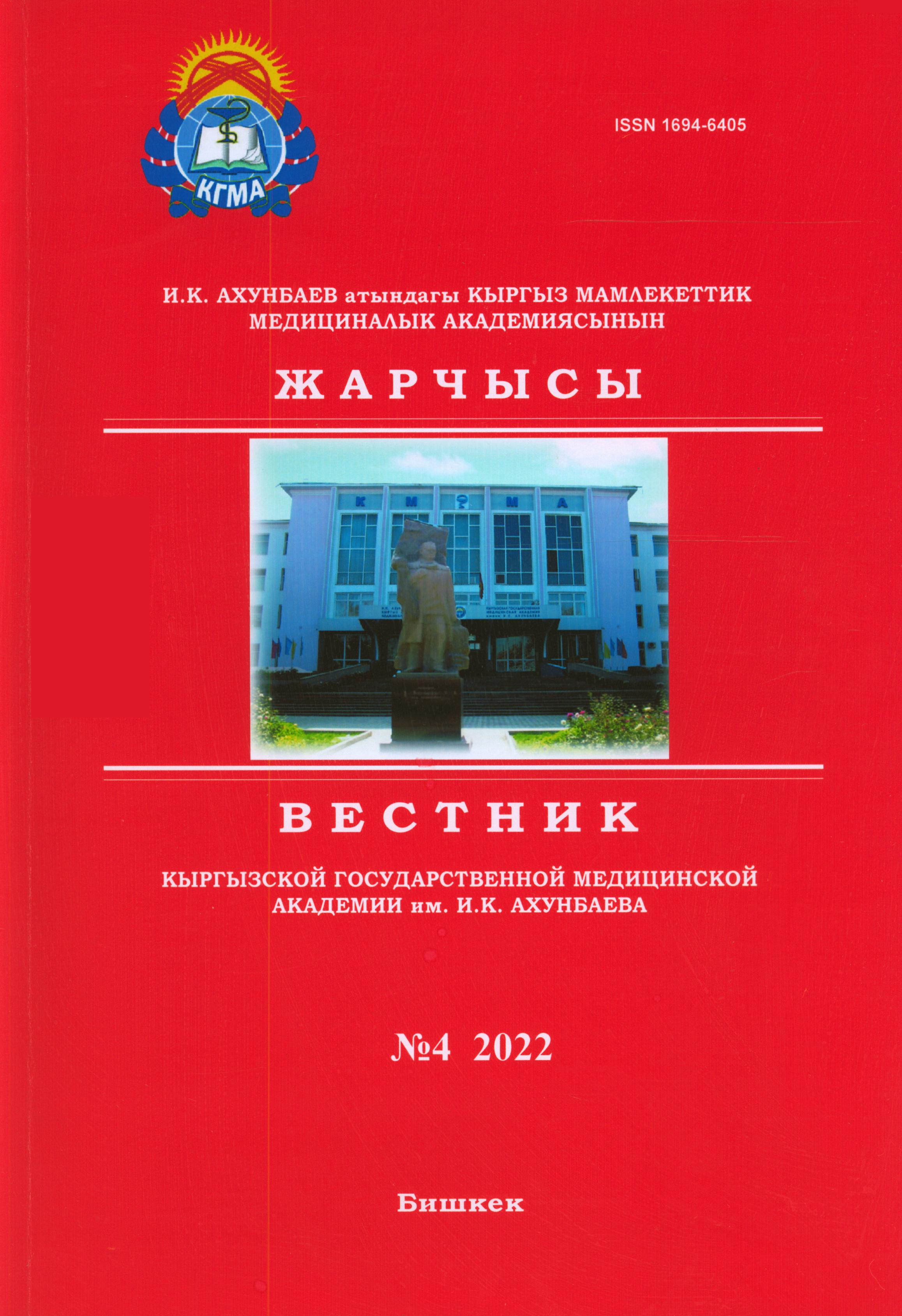ASSESSMENT OF THE USE OF ANTIBIOTICS ACCORDING TO THE CLASSIFICATION OF THE WORLD HEALTH ORGANIZATION AWARE AND ANALYSIS OF DATA ON THEIR CONSUMPTION AT THE HOSPITAL LEVEL IN THE KYRGYZ REPUBLIC
DOI:
https://doi.org/10.54890/1694-6405_2022_4_10Abstract
Abstract. To reduce the threat of antibiotic resistance, the World Health Organization (WHO) introduced the Access, Watch, Reserve (AWaRe) classification system in 2017, which is an important tool for collecting data on global consumption of antibiotics based on their resistance potential. The purpose is to conduct a comparative assessment of the use of antibiotics in the Kyrgyz Republic according to the AWaRe classification. Materials and research methods. To assess the use of antibiotics according to the AWaRe classification system, the WHO database for 2019 and the approved List of Essential Medicines of the Kyrgyz Republic (2018) were used, with an emphasis on physical availability in the pharmaceutical market and registration in the Kyrgyz Republic. Results. According to the AWaRe classification, the category of general access (Access) includes 48 antibiotics, 20 of which are included in the WHO List of Essential Medicines, while 18 are included in the List of Essential Medicines of the Kyrgyz Republic, while 16 antibiotics are registered in the country.Of the 110antibiotics in the Watch group, only 33 (30.3%) are registered in the Kyrgyz Republic, of which 11 comply with the WHO List of Essential Medicines. The List of Essential Medicines of the Kyrgyz Republic includes 18 antibiotics, but only 10 of them comply with the WHO List of Essential Medicines. The Reserve group includes 22 antibiotics, of which 7 are included in the WHO List of Essential Medicines. Only 3 antibiotics are registered in the Kyrgyz Republic, 1 is included in the "List of vital medicines of the Kyrgyz Republic". Discussion. The issues of rational use of antibacterial drugs are relevant at the cross-country level. Without changes in national policy, the WHO target of at least 60% of total antibiotic consumption in the access category by 2023 will not be met. Conclusions. The AWaRe system is an important indicator of efforts to combat antibiotic resistance and ensure equal access to effective antibiotics across countries. In the Kyrgyz Republic, in the context of a global increase in antibiotic resistance, it is necessary to introduce the AWaRe system to determine the purchase and use of antibacterial drugs. Revision of the List of Essential Medicines and registration of antibacterial drugs in the Kyrgyz Republic should be carried out on the basis of the AWaRe (WHO) classification.
Keywords:
antibiotics, antibacterial drugs, management system, quality of antibiotic use, classification of antibiotics, World Health Organization.References
1. 7th meeting report of WHO advisory group on integrated surveillance of antimicrobial resistance (AGISAR). Geneva: World Health Organization; 2018. Available from: https://apps.who.int/iris/bitstream/handle/10665/272714/WHO-NMH-FOS-FZD-18.1-eng.pdf
2. The State of the World's Antibiotics 2021. A Global Analysis of Antimicrobial Resistance and Its Drivers. The Center for Disease Dynamics, Economics & Policy (CDDEP), Inc. 2021. Available from: https://www.lshtm.ac.uk/research/ centres/amr /news/227421/state-worlds-antibiotics-2021
3. Hsia Y, Lee BR, Versporten A, Yang Y, Bielicki J, Jackson C, PhD et al. Use of the WHO Access, Watch, and Reserve classification to define patterns of hospital antibiotic use (AWaRe): an analysis of paediatric survey data from 56 countries. The Lancet. 2019;7(7):е861-е871. https://doi.org/10.1016/S2214-109X(19)30071-3
4. WHO Model List of Essential Medicines: WHO AWaRe Classification Database of Antibiotics. Date: 2019, Date accessed: April 17, 2020. Available from: https://www.who.int/publications/i/item/WHOEMPIAU2019.11
5. WHO Collaborating Centre for Drug Statistics Methodology. ATC/DDD Index. 2017. Available from: https://www.whocc.no/atc_ddd_index/
6. Klein EY, Milkowska-Shibata M, Tseng KK, Sharland M, Gandra S, Pulcini C et al. Assessment of WHO antibiotic consumption and access targets in 76 countries, 2000–15: an analysis of pharmaceutical sales data. Lancet Infect Dis. 2020. https://doi.org/10.1016/S1473-3099(20)30332-7
7. IQVIA. IQVIA MIDAS. 2000-2015. Available from. https://www.iqvia.com/solutions/Commercialization/geographies/ midas
8. ДЛСиМИ. Перечень жизненно-важных лекарственных средств КР, ПП КР №274 от 06.06.2018. Режим доступа: http://www.pharm.kg/ru/live_important/







